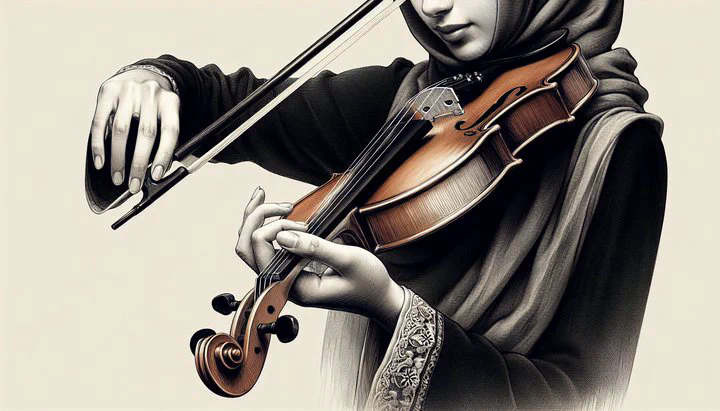Is My Violin Teacher's Bowing Advice Correct

Exploring Your Path to Perfect Bowing: Is My Violin Teacher’s Bowing Advice Correct?
Every violinist, from beginners to seasoned players, has pondered the question: Is my violin teacher’s bowing advice correct? It’s a common question, especially when you encounter different techniques. Let’s explore how to evaluate your teacher’s advice and discover the best bowing technique for you.
Understanding Your Teacher’s Bowing Advice
When it comes to playing the violin, teachers often offer specific bowing tips to help you produce a clear, beautiful sound. They might suggest that “the bow should be slightly twisted or rotated towards the fingerboard” to achieve a certain tone or to match the style of the piece you’re playing. This advice is shaped by their experience, your skill level, and the music style.
Your teacher’s recommendations might also be influenced by your current skill level. For beginners, teachers focus on foundational techniques to build good habits. As you progress, they might introduce more advanced techniques to challenge and enhance your playing. If you’re ever unsure, don’t hesitate to ask your teacher for explanations. This not only helps you understand their rationale but also opens the door to a dialogue where you can express your concerns like “I’m not sure if the bowing technique he told me is correct.”
Additionally, the style of music can play a significant role in the advice you receive. Classical pieces might require a different approach than jazz or folk music. This could be why, at times, you might feel like “I sound much better this way than the way the teacher recommended.” It’s important to discuss these feelings with your teacher, as they can provide insights or adjustments to help you find the best approach for you.
In conclusion, understanding your teacher’s bowing advice involves recognizing the factors that shape their suggestions. By engaging in open conversations and seeking clarifications, you can better appreciate their guidance and make informed decisions about your violin technique. Remember, it’s all part of your journey to becoming a skilled musician.
Evaluating Your Own Bowing Technique
Once you’ve considered your teacher’s advice, it’s time to take a closer look at your own bowing technique. You might question, “Is my violin teacher’s bowing advice correct?” Here’s how you can evaluate your technique:
- Mirror Practice: Play in front of a mirror to observe your bowing movements and posture closely.
- Record and Listen: Record yourself while playing and listen to the recordings. Notice the nuances in your playing and any differences compared to your teacher’s advice.
- Self-Comparison: Try playing a piece using both your method and the suggested technique. Which produces a clearer sound or feels more comfortable? Sometimes “the bow should be slightly twisted or rotated towards the fingerboard” to achieve the desired tone.
Don’t hesitate to seek feedback from peers or other instructors. They can offer a fresh perspective and may notice things you’ve missed. Engaging with other musicians through online communities or local music groups can be incredibly helpful. Share your experiences and ask if others have felt unsure about their teacher’s advice. This interaction can validate your feelings and provide additional insights.
Ultimately, evaluating your bowing technique involves a combination of self-assessment and gathering external opinions. By taking the time to reflect on your playing and seeking feedback, you’ll be better equipped to decide if “I’m not sure if the bowing technique he told me is correct” or if it’s the right path for you. This process will help build your confidence and lead to more informed decisions about your violin playing.
Finding the Right Bowing Technique for You
Once you’ve evaluated your own playing, the next step is to find the bowing technique that truly suits you. You might still wonder, “Is my violin teacher’s bowing advice correct?” The best way to answer this is through experimentation:
- Try Various Techniques: Experiment with different methods, including those suggested by your teacher and those that feel more natural to you.
- Focus on Comfort and Sound: Personal comfort and the sound you produce are key indicators of the right technique. For example, if your teacher recommends that “the bow should be slightly twisted or rotated towards the fingerboard,” but you feel more comfortable keeping it straight, try both methods and listen closely.
Many famous violinists have gone through similar journeys, experimenting with different techniques until they found what worked best for them. These stories can be inspirational and remind you that it’s okay to forge your own path. Don’t be afraid to trust your instincts when it comes to your playing. Your comfort and sound quality should guide your decisions.
Remember, finding the right bowing technique is a personal journey. It’s about blending your teacher’s advice with your preferences. Engage in open conversations with them about your findings. They can provide valuable insights and help you refine your technique further. If you ever feel uncertain, remember that your musical journey is your own, and it’s okay to take the path that feels right for you.
In the end, the goal is to achieve a harmony between your teacher’s guidance and your personal style. Keep experimenting, stay curious, and trust yourself. Your unique sound will emerge as you continue to explore and refine your technique. This exploration not only builds your confidence but also enhances your overall musicianship.
Call to Action
Join the conversation and share your experiences with bowing techniques in our community forums or on our partner subreddits like “Violinist” or “MusicEd.” Connecting with fellow musicians can provide additional support and insights as you navigate your musical journey.